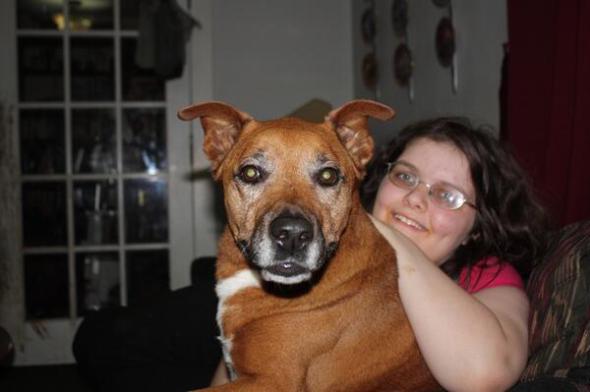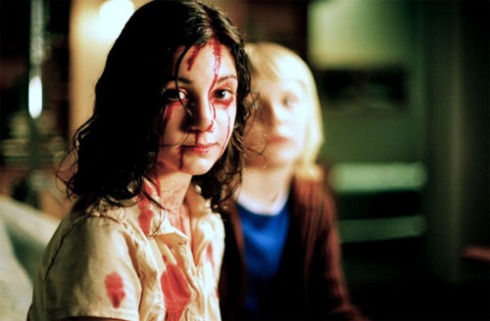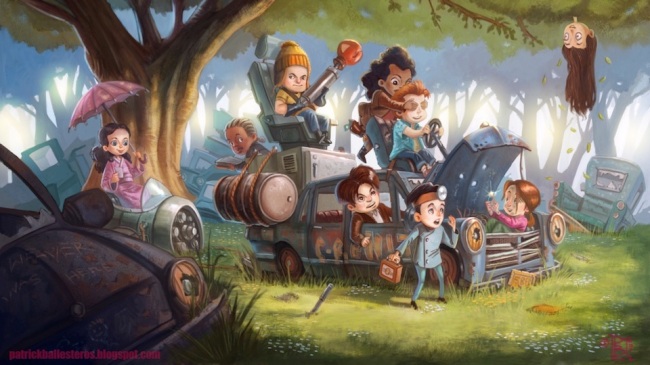The events that unfold in “The Woman” are not always believable or even serious, but they are consistently intriguing and have a thought-provoking message behind them. The acting adeptly drives home this message- ‘the woman’ of the title (Pollyanna McIntosh,) a feral human wandering the wilds of rural North America, may be more animal than human, but she is more of a person than her sadistic (and supposedly ‘civilized’) male captors.
The Cleeks are an all-American family that have done well for themselves- Dad Chris (Sean Bridger) is a successful lawyer, while the others fall into traditional roles of housewife, jock brother, feminine sister, and cutie pie youngster. But something is terribly wrong. Chris rules his frightened family with an iron fist, bullying them into compliance, while older daughter Peg (Lauren Ashley Carter) hides a terrible secret from the rest of the world.
So when the unthinkable happens- Chris brings home a feral woman to force his family to participate in her ‘reintroduction into society’- the others are bullied into playing along- but such a decision will have explosive consequences. While brother Brian (Zach Rand) follows in his dad’s footsteps and downtrodden mom Belle (Angela Bettis) frets, sister Peg’s secret becomes increasingly hard to hide.
The acting here is quite good- I was especially impressed by Lauren Ashley Carter as Peg, who portrayed her alienation, aching loneliness, and increasing empathy for her father’s prisoner startlingly well. I really started to care for her- I felt she was a good person trapped in a very sick family dynamic, and felt keenly for her.
Polly McIntosh and Angela Bettis were very good too- Bettis, who impressed in director Lucky McKee’s 2002 horror film “May,” here shows her versatility as a weak, frightened wife and mother, while there is no trace of actor in McIntosh’s portrayal of a wild woman who has met her match in sadistic captor . I felt Sean Bridger’s ‘family-values-gone-awry’ dialogue was a bit silly at times (like a close descendent of Terry O’Quinn’s “The Stepfather,”) but he did alright with the resources he had.
“The Woman” raises this question- what is more dangerous, a person who is taught to put on a mask of success and normalcy but remains a wild animal, or a person who has never been taught these resources. This would make a great companion viewing with the Stephen King essay “Why We Crave Horror Movies,” which goes into the dark urges we are taught to keep in check.
I urge you to pay attention to the scene where youngest child Darlin’ Cleek (Shyla Molhusen) demands a cookie from her mother, to which Mom responds, “That’s not a very nice way to ask.” Promptly, the girl says “Please may I have a cookie Mommy, I love you” (not a direct quote.) We are taught these techniques from an early age, but when the person being taught in a psychopath, does etiquette make him a less monstrous monster?
The editing in “The Woman” is sometimes a little overbaked, as is the writing, and the bombastic ending is so gory and disgusting that it is hard to take seriously, but the films performances and psychological aspects make it worth seeing and discussing.
Rating-
6.5/10

























